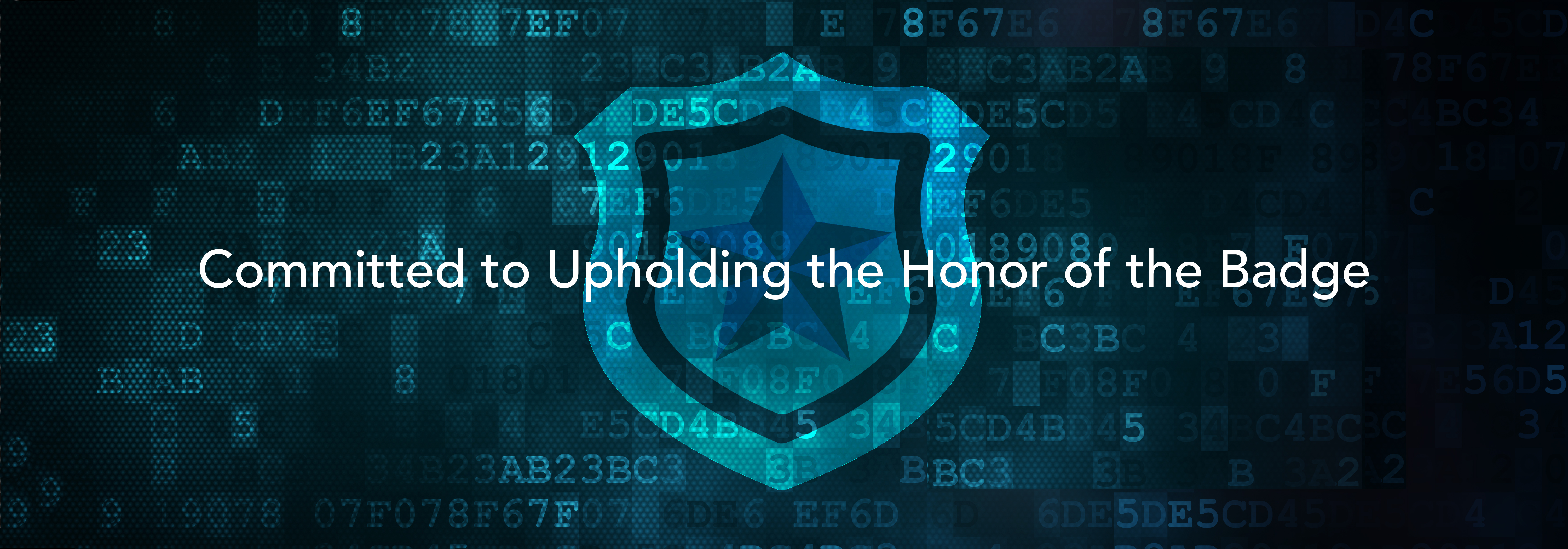(Ed. Note: This blog is adapted from a presentation delivered to the Michigan Association of Chiefs of Police’s (MACP) summer conference on June 25th, 2019)
5 Stages of Transformative Management for Law Enforcement
How Data, Psychology and Mass Media Can Affect Perception of Law Enforcement Encounters
One of the most challenging issues facing police executives is the impact of use-of-force incidents on the relationship between law enforcement and the public. Law enforcement, due to the nature of its role, is empowered to use reasonable force as defined by municipal and state legislation or policy.
The use-of-force continuum exists to provide officers with an escalating variety of methods to maintain order and encourage adherence to the law. However, the scope of that empowerment has become a national question, and law enforcement is facing escalated scrutiny. While any oversight is generally good for agencies (it provides a relatively accelerated feedback loop, making it quicker and easier to improve), the current trend can seem overwhelming, especially with the ubiquity of smart phone cameras.
It’s important to remember everyone is operating with a limited set of data. Most citizens and sworn officers instinctively evaluate available data (personal and professional experience, books, television, websites, social media, actual neighbors) using innate – and learned – analytic models that might not be suited to dissecting the complexity of a critical incident. If you’ve never been exposed to a dataset, regardless whether it confirms or contradicts your perspective, it might as well not exist let alone influence your take on a situation.
In an effort to broaden the view of police executives wanting to address use of force in their agencies, the FBI announced an initiative to collect use-of-force data in 2018. The nationwide scope of this project will enable data analysts in law enforcement to evaluate the use of force at a nationwide level and compare those findings to what they are seeing at their agency. Holistic access like this has rarely been available to police leadership, which isn’t to say information about use of force has been scarce.
Evaluating Law Enforcement Service with a Public Lens
Since the early 20th century, researchers have attempted to measure public perception of law enforcement and the effect it has on officer efficacy. Arthur Bellman, with an assist from August Vollmer, is one the first people to develop a means to quantify police work. In 1935, he published a paper titled “Police Service Rating Scale.”
In it, he suggests an “objective instrument” to measure police performance, “according to certain standards.” (Bellman’s model might resemble some of the policies found in today’s law enforcement accreditation – a much more reasonable application of his framework).
Subsequent papers were quick to point out that the absence or presence of one of Bellman’s variables could not be used to scientifically quantify the service rating of an agency. However, Bellman’s paper shows that an appetite for understanding the public’s role in judging the efficacy of policing is nothing new.
Police-Public Contact Survey
Every three years, the U.S. Department of Justice conducts their Police-Public Contact Survey (PPCS), which attempts to gather data on a variety of metrics associated with police-public interactions, including use of force. The 2015 survey revealed that approximately 53.5 million people aged 16 years or older had contact with the police during the previous 12 months. Of those 53.5 million contacts, approximately 27 million were police-initiated — and approximately 5 million resulted in the individual receiving either the threat of force or the use of force by law enforcement.
Though the data sets seem sound, a 2018 research study published in the Public Library of Science found that the four iterations of the PPCS (one every three years) contained enough variation that year-to-year comparisons were statistically problematic. Further, the researchers noted that the PPCS is a targeted survey (US residents aged 15 and older, English speaking only, with access and ability to answer survey questions), that naturally eliminates any possible respondents that do not fit the requirement or can’t answer the questions (but may still have experienced police use of force).
Unfortunately, the lack of complete data on police use of force is creating more conflict than cohesion. Activist groups and journalists continue to push lawmakers for increased police oversight, but the absence of use-of-force data is a major hurdle to satisfying these requests.
The demand, and expectations, for government transparency have reached the point where some media outlets have chosen to create their own “use-of-force databases” to satisfy the public's desire for information.
Crowd-Sourced Use-of-Force Databases
As you can see, while crowd-sourced data can be useful in understanding the sentiment of a particular group, it’s not a sustainable resource for guiding corrective action. It’s just not complete or scientifically rigorous enough to compel wide-scale change. This is why digitization of existing personnel data, as well as contributing to projects like the FBI’s, are critical to the success of data-driven policing. Using data to inform your management and personnel strategies is a natural extension of evidence-based policing. It enables you to determine effective policies based on longitudinal data rather than anecdotal information.
Media outlets construct ad-hoc databases by searching through a massive volume of articles, reports, police records (secured through a state’s Freedom of Information Act (FOIA) laws), or crowd-sourced submissions.
While these databases contain many bytes of potentially useful information, they are not held to any particular standard of statistical analysis or reporting requirements. Outlets can source data at will by using any method they wish and are not required to make their data accessible for peer-review. As noted by journalism researchers in a 2013 study, while many journalists strive for accuracy, methods for verifying information differ journalist to journalist.
While potentially well-meaning, presenting data in this manner can affect public perception on police use of force. While the data access is a positive, analysis is not something the average citizen is trained to do. In the same way we need to approach any article with a critical eye it’s important to teach people to recognize that data on its own is objective, the visualizations we apply to it can’t possibly be.
The Psychology of Perception
In 1973, research psychologists Amos Tversky and Daniel Kahneman began to share groundbreaking research in cognitive biases and the psychology of decision making. Among their most prominent works was their research that discovered the availability heuristic and, subsequently, the accompanying cognitive error known as availability bias. Their findings have since been replicated countless times and their theories have been added to the basic tenets of psychology.
Heuristic is a fancy term for mental shortcuts, and, in this case, the availability heuristic is a mental shortcut where individuals make decisions or draw conclusions dependent on how recently information entered their memory. Subsequently, availability bias occurs when the recency of that information informs judgments on a broader scale. What this means is we’re more likely to give more weight to information we’ve experienced or learned recently than something perhaps truer but less obvious or top of mind.
The unfortunate conclusion is that, coupled with an unprecedented alignment in media coverage of law enforcement, citizens begin to anticipate police use force, act non-compliant in accordance to that anticipation, and situations escalate to require more force than might have been necessary.
In a similar vein, citizens are more likely to believe that all police interactions can result in sudden unexpected violence, based on the frequency of media reports covering police use of force. Such beliefs can lead some people to experience far more anxiety, or react unexpectedly, during routine police actions such as traffic stops.
Otherwise innocent encounters may result in citizens resisting police control simply because they fear being the victim of “police brutality”. Tragically, regardless of the cause, officers would be forced to respond to such resistance, leading to a perpetuation of the vicious cycle favoring a narrative focused on “police brutality” rather than one focused on legitimacy and improved relationships with citizens.
We are not only dealing with an inescapable hiccup in rational thinking (the availability bias), but the combined limited and limitless nature of communication in the age of non-stop, and social, media. This is not to say that policing should exist without scrutiny, but that we should understand, and circulate, how cognitive biases affect our perception of the seemingly obvious.
How to Help Your Officers Establish a Work-Life Balance
If you type “work-life balance” in a search engine, it is often defined as the harmony between personal and professional activities, related to an individual’s job and presence at home.
What Data to Consider when Evaluating a New Officer's Performance
You can think about officer performance evaluation from three different, though equally important, perspectives. First, an officer’s performance is evaluated by field training officers (FTOs) based on how well they apply academy techniques to real-world scenarios as new recruits.
Implementing Policing Technology to Make a Difference in Officer Wellness
Historically, officer wellness has been viewed as the physical fitness of an officer. Today’s agencies recognize it’s important to show officers how to take care of both their bodies and mind. Emerging technology can help agencies better understand how the stresses of policing affect an officer’s mental health and provide guidance on how leadership can support personnel before the stakes are raised by a critical incident.
How Field Training Officers Influence Police Department Culture
A police department is essentially a small community. Departments are predisposed to sharing ideas, norms, attitudes, ethics, and values. Some may value proactivity and arrests, while other departments may value community action and non-enforcement contacts.
Sir Robert Peel, the so-called father of modern policing, was early to identify that public trust would be essential to his vision’s success. Both before and after Peel, political theorists have written piles of books and papers on the relationship between people with authority and the people willingly subject to it.
Agency Accreditation: What to consider before pursuing it for your department
Many professions and industries (e.g., schools, hospitals, manufacturers, software providers) use accreditation to define and distribute policy standards based on the experience and authority of the accrediting body. Beyond the pragmatic benefit of access to best practices, accreditation signals that a company or organization wants to align itself to proven, and quality assured, modes of operating. Some believe it can serve, “as a credible sign of departmental competence, and building a reputation for competence can benefit the department…and the city as a whole.”
Why and How (Most) Police Departments Should Go Paperless
It's likely no child has ever spent a wish on becoming a paper pusher, but it's an unavoidable part of nearly every job. Some companies, like those serving other businesses or selling goods directly to consumers, have pivoted to cloud-based document management, while others, namely government agencies and organizations serving the public, continue along the paper trail.
How Police Executives Can Use New Technology to Comply with State Laws
In a 2017 study, the Vera Institute published a study on state-level police reform. They found two goals drove the majority of new laws: increase police confidence and improve police safety. Between 2015 and 2016, "34 states and the District of Columbia enacted at least 79 bills, executive orders, or resolutions . . .to change some aspect of policing policy or practice." When looking at the entire data set, researchers identified three outcome categories for the new legislation: "improve policing practices; document police operations; and increase accountability in police use of force cases."











